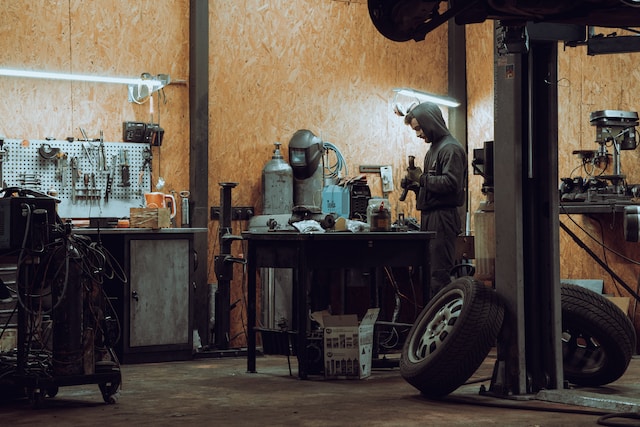Workshop benches and tables are the unsung heroes of industrial spaces, bearing the weight of innovation and refinement that spans decades. In today’s rapidly evolving industrial landscape, these essential pieces of furniture play a crucial role in shaping the efficiency, safety, and comfort of a workspace. Understanding the intricate details and standards that define quality in workshop furniture is paramount for anyone tasked with planning and equipping a functional workspace. This article aims to delve into the significance of various aspects, exploring the advantages of certified workshop benches and tables and the essential features that contribute to the creation of a well-equipped and productive workshop environment.
Significance of Quality Material
At the core of any reliable workshop furniture lies the quality of materials used in its construction. Workshop benches and tables endure a relentless barrage of weight loads, exposure to chemical substances, and mechanical stress throughout their lifetime. To withstand these formidable challenges, these pieces should be crafted from materials renowned for their strength and durability. Hardened steel, stainless steel, and heavy-duty wood emerge as preferred choices due to their exceptional resistance to wear and tear.
Quality materials not only determine the longevity of workshop benches and tables but also influence their performance under strenuous conditions. The robust nature of materials like hardened steel ensures that these workhorses can withstand the daily rigors of an industrial setting, providing a stable and reliable platform for various tasks. Stainless steel adds an extra layer of resilience, offering resistance to corrosion and rust, crucial considerations in environments where exposure to harsh substances is inevitable.
Layout and Storage Capabilities

Optimal workflow in a workshop is contingent on the thoughtful layout and storage capabilities of benches and tables. A well-designed workspace facilitates efficient movement, easy access to tools, and ample working space. Some tables come equipped with built-in storage compartments, while others may feature a bottom shelf or hooks for hanging tools. The integration of these elements is crucial for promoting seamless operations, ensuring that the furniture complements and enhances the overall efficiency of the workspace.
The layout of workshop benches and tables should be conducive to the specific tasks carried out in the space. Considerations such as the placement of power outlets, proximity to necessary tools, and the flow of work from one station to another play a pivotal role in the overall functionality of the workshop. Built-in storage compartments contribute to a clutter-free workspace, promoting organization and easy retrieval of tools or materials. A bottom shelf adds an extra layer of utility, providing space for larger tools or containers, keeping the work surface clear for ongoing tasks.
Role of Ergonomics
Durability alone does not suffice when it comes to workshop furniture. Proper ergonomics is equally vital, considering the physical toll exacted on workers in these environments. Workshop benches and tables should be designed with the ergonomic needs of workers in mind, promoting good posture and reducing the risk of strain injuries. Adjustable heights, rounded corners, ample leg clearance, and optimal depth are features that contribute significantly to the ergonomic value of these pieces.
Ergonomics extends beyond comfort; it directly influences the efficiency and productivity of a workshop. An ergonomic workbench reduces the likelihood of work-related injuries, such as back strain or repetitive motion injuries, thereby minimizing downtime and medical costs. Adjustable heights cater to the diverse needs of workers, accommodating variations in tasks and individual preferences.
Safety and Compliance Standards
In a workshop setting, safety is paramount, making certified workshop benches and tables indispensable. Adherence to safety and compliance standards is non-negotiable. This includes considerations such as load rating, stability, and resistance to fire or harmful chemicals. Certified furniture acts as a frontline defense, safeguarding the well-being of staff and ensuring that the workspace remains a secure environment. The importance of investing in furniture that meets these rigorous criteria cannot be overstated, as it directly correlates with the overall safety and functionality of the workshop.
Safety standards are not just regulatory checkboxes; they are fundamental to the protection of workers and the prevention of accidents. Load rating ensures that the furniture can withstand the intended weight capacities without compromising stability. Stability is crucial in preventing accidents such as tipping, especially when dealing with heavy tools or machinery.
Maintenance and Sustainability
Beyond the initial considerations of material and design, the ease of maintenance is a crucial factor in prolonging the lifespan and efficiency of workshop benches and tables. Routine maintenance should be straightforward, contributing to long-term cost savings. In an era marked by increased environmental awareness, sustainability becomes an added consideration. Opting for furniture manufactured through sustainable processes not only aligns with corporate environmental responsibility but also reflects a commitment to a greener and more conscientious industrial landscape.
Maintenance should be a proactive rather than reactive process. Workshop benches and tables should be designed for easy cleaning and upkeep, minimizing the impact of wear and tear. This not only extends the lifespan of the furniture but also ensures that it continues to meet safety and performance standards over time.







